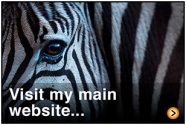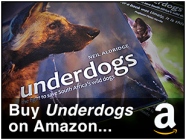Okay so let’s get one thing clear – these aren’t actually flying squirrels, they’re red squirrels (Sciurus vulgaris). More specifically, they’re Scottish red squirrels. Most of my previous attempts to photograph these wonderfully iconic creatures have been fruitless, which makes me even happier with the resulting pictures from a recent trip to the Highlands.
If I’m honest, while planning this trip to Scotland I was visualising and hoping for snow…and lots of it. Yet, while neither myself nor fellow South African photographer Ben Cranke came away with the wintery images that we had prepared for (and I always try to plan my shots before a shoot), the show that the squirrels put on and the opportunities that we had to capture their antics were beyond our expectations.
Ben and I spent two days working a set-up in Glenfeshie (check out the Northshots website for info) in the Cairngorms National Park, moving between a hide by a drinking pool and a hide positioned on the edge of the forest. We managed to learn the habits of the squirrels pretty quickly and finally get the best jumping, drinking and feeding shots that the lighting conditions would allow. While we may have arrived in the middle of a strange mid-winter heatwave, the sun was still low in the sky and barely broke above the treeline, making me pretty glad I had the f2.8 capacity of my Canon 400mm and 70-200mm lenses. I was also quietly happy to see Ben struggling to autofocus in the low light with his much vaunted Nikon D4* (*Disclaimer: this may not have happened).
It’s neither a secret nor is it new news that red squirrels in the UK have been squeezed out of their natural range by non-native grey squirrels. Grey squirrels cause such damage to the UK’s native fauna and flora that they are listed in the IUCN international list of 100 most impactful invasive non-native species. They are not only larger and out-compete the native reds for resources but they also carry the parapox virus. While greys can carry the virus without being affected, reds are highly susceptible to it. Research shows that in areas where both species occur and where the virus is present, greys can displace the reds up to 20 times faster. This makes protecting red squirrel strongholds both more important and more difficult.
Having been won over by Glenfeshie’s super squirrels, we left the comfort of the hides behind and spent two days on the surrounding snow-capped mountains searching for ptarmigan. Check back soon to see how we got on looking for white birds in a white landscape in horizontal blizzards.
Check out more images & news at conservationphotojournalism.com














